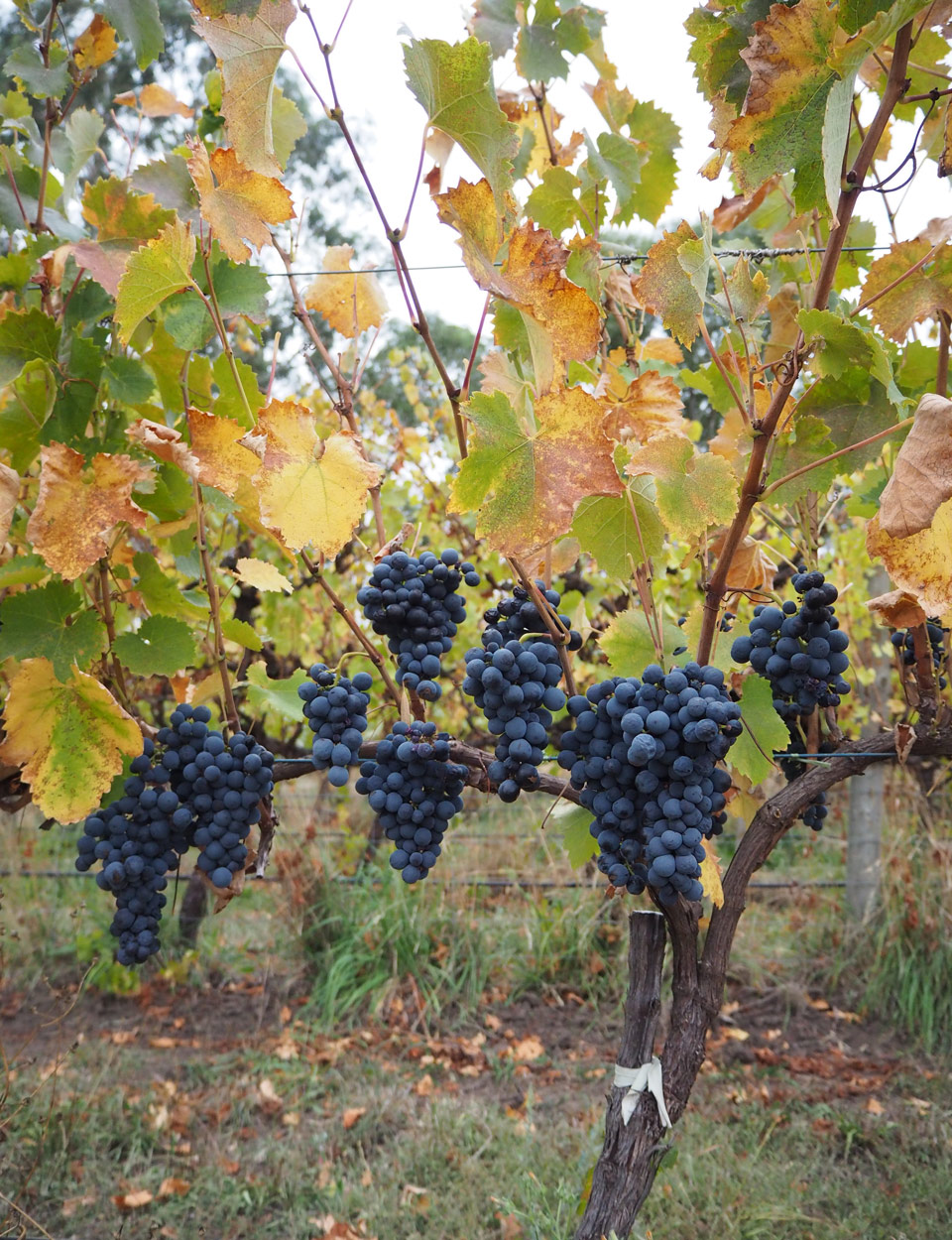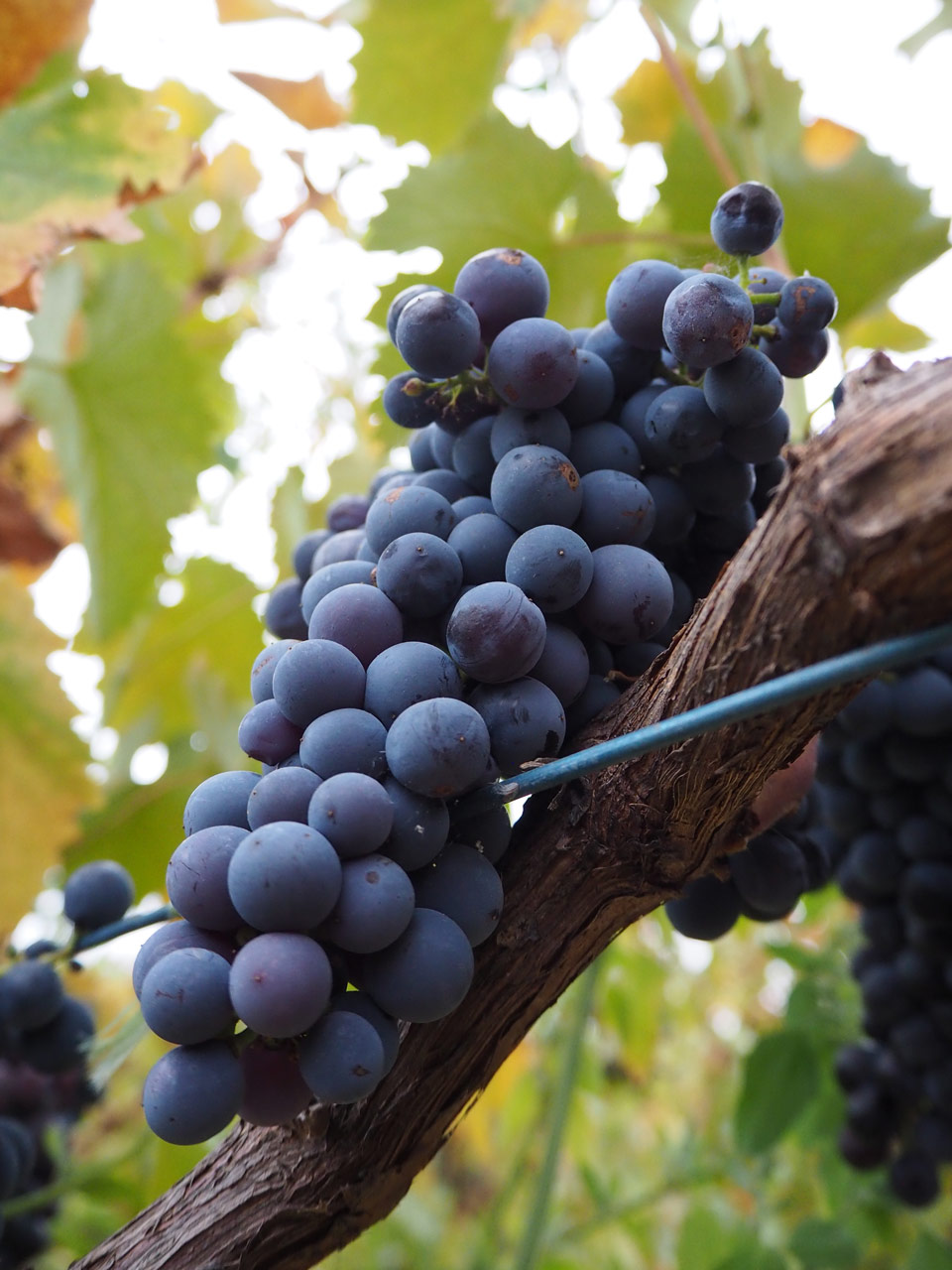Mourvèdre has been in this country as long as any variety, but it has often been sunk into blends, playing a vital role but rarely grabbing the mic. And while that remains the destination for most of this darkly fruited and tannic grape, it can play a pivotal role in those wines, and gets the occasional outing solo in both red and rosé wines.
Also known as
The grape goes by several localised names, including the synonym mataro (Mataró is a town in Spain’s east, where the grape is thought to have originated) that is used in Australia and the US, but it is the French name mourvèdre that is the most common, followed by monastrell, the main Spanish name.
What mourvèdre tastes like
As with many grapes typically used for blending, mourvèdre has a distinct personality. It is a variety that is often strong in tannic structure, quite dark fruited and spicy, often with an almost animal and wild herb aroma. This will naturally depend a little on site and winemaking, with the grape commonly made into rosé that shows none of that wildness, instead typically displaying red berry notes, though the wines are often still blends.
Vineyard & winemaking
A warm climate is required to ripen mourvèdre, with it both budding and ripening late in the season. Dry conditions are also ideal, as it can be prone to disease, but it does not perform well in dry soils, requiring good soil moisture to thrive. Mourvèdre can be made into rosé or vinified as red wine, with care taken with the extraction given the small berries and wealth of tannins. Like with grenache, new oak is rarely seen as a complementary influence, and it is blended more often than not.
Where is mourvèdre grown?
Mourvèdre is thought to have originated in Spain’s east, potentially from Valencia or Catalonia, where two of its synonyms point to towns in both areas, Murviedro and Mataró, respectively. The grape proliferated across the east, and it is still the most fourth most planted variety in the country, though the bulk of production is for simpler wines. It is unsurprising that the grape migrated north, finding homes in France’s Roussillon, then across the Mediterranean coast through Provence, where it contributes to rosé and red wine, most notably in Bandol. After the phylloxera epidemic of the 19th century, the once dominant grape was supplanted by grenache and the like. It took the tireless work of Lucien Peyraud, of the great Bandol estate Domaine Tempier, to see mourvèdre once again achieve dominance, thus elevating the quality and reputation of the appellation. A little further north, Mourvèdre also plays a critical role in Côtes-du-Rhône appellations and Châteauneuf-du-Pape as a blending component.
Mourvèdre around the world
While mourvèdre travelled up through Spain and across the French Riviera, it never really made it any further. Italy’s Liguria shares the coastline and the vermentino grape (called rolle in France), but the vineyards are perched on the cliffs above the beaches, with sub-Alpine conditions too cold for the grape. It is in the New World that mourvèdre has found a meaningful home, principally in Australia and the US. In the US, old plantings are present in many parts of California, with the synonym mataro used until the vines were identified as mourvèdre – mataro was previously thought to be a separate variety there, and principally used for basic wine. The grape is now also grown in Washington state.
Mourvèdre in Australia
Along with so many other varieties, mourvèdre came to Australia in the 1830s with the Busby Collection. It took up residence primarily in the Barossa Valley and McLaren Vale, where it contributed to blends, providing robust material for fortified wines, once the darling of the industry. That input was an anonymous one, and it fell out of favour when table wines usurped fortified ones in the second half of the 20th century. The “vine pull” scheme of the 1980s saw many a venerable mataro vine uprooted, but many were saved, too, with makers like Rockford and Charles Melton using it in Australian takes on Côtes-du-Rhône and Châteauneuf-du-Pape blends, allied with grenache and shiraz – or GSM blends. Somewhat later, makers like Hewitson and Turkey Flat started to bottle old-vine versions as varietal wines. However, perhaps mataro’s most famous Australian wine is a blend with shiraz, made by Wendouree from their ancient Clare Valley vines. Today, while more and more solo expressions exist, the grape is still more likely encountered in a blend, either for red wine or rosé.
Photo of mourvèdre grapes seen here, courtesy of Gemtree.
Some of the best Australian mourvèdre
Bertrand Bespoke
Cirillo
Gemtree
Hewitson
Krinklewood (rosé)
Syrahmi (rosé)
Tim Smith
Tonic
Turkey Flat
Yangarra




